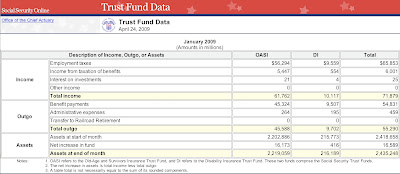The government has identified Édgar as the first person in Mexico to have become infected with a virulent strain of swine flu, a notoriety that could raise questions about how Mexican officials reacted — or failed to react — to the early stages of what might become a global epidemic.What was the result?
Édgar was one of hundreds of people in La Gloria who came down with flulike symptoms in an outbreak that federal officials say began March 9.
In La Gloria, a town that has a major pig farming industry, two children died of the flu in March and early April, though the authorities said they had yet to determine whether it was the same strain that infected Édgar and spread widely to other locales. That and other questions have left residents here unnerved and confused.We don't know how many of these people had this strain because it seems that only Edgar's sample was actually saved for testing, but Occam's Razor suggests that we are talking about one bug spreading. Now it is true that the local authorities didn't agree, at least not initially. Swine flu's ground zero? Residents say nearby farm
The people in this town of 3,000 high in the Veracruz mountains believe their community is ground zero for the swine flu epidemic, even if health officials deny it.So lets break this down. Starting in February up to 450 out of 3000 inhabitants were suffering from severe flu symptoms, suggesting that even more were infected with a milder version. In any event we have something is is obviously quite contagious but not notably deadly. This is somewhat confirmed by the fact that reports are coming in from around the world that people returning from tourist trips to Mexico are showing signs of the disease but in almost all cases a relatively mild version. Plus it seems that they picked this up in many different parts of Mexico, for example the NY kids were in Cancun.
The town is home to Mexico's earliest confirmed case of swine flu, a 4-year-old boy who was among more than 450 residents who complained of respiratory problems. They blame contamination spread by pig waste at nearby breeding farms co-owned by a U.S. company. But the company says it found no sign of swine flu on its farms, and Mexican authorities haven't determined how or where the swine flu outbreak began.
As early as February, residents began complaining of unusually strong flu symptoms. They blamed a farm that lies upwind, five miles (8.5 kilometers) to the north. By late March, roughly one-sixth of the community of 3,000 began suffering from severe respiratory infections.
Local health officials and Federal Health Secretary Jose Angel Cordova downplayed claims that the swine flu epidemic could have started in La Gloria, noting that of 30 mucous samples taken from respiratory patients there, only 4-year-old Edgar Hernandez's came back positive. That confirmation that the boy's virus was H1N1 — a strange new mix of pig, bird and human flu virus — wasn't made until last week, when signs of the outbreak elsewhere prompted a second look at his sample.
Cordova insists the rest of the community had suffered from H2N3, a common flu.
All of which suggest this possibility, first hinted at by Sanjay Gupta a couple of days ago, that the flu is already an epidemic throughout Mexico but relatively few are dying of it. A couple of days ago there were 81 fatalities, today that is up to 149. But Mexico City has 20,000,000 people. If we take La Gloria as our template we have 15% of the people with severe symptoms with 2 of those 450 having died. Suggesting a mortality rate among the infected of 0.5%. 15% of 20,000,000 equals 3 million people with severe symptoms. 0.5% of that is 15000. Yeah that is a big number but is just 1 in 1333 inhabitants.
There is a hell of a lot of uncertainty here. We have no idea of how many people have been exposed to what. But it is at least possible that almost everyone in Mexico has been exposed and that only in the biggest cities are the fatality numbers big enough to notice. Anyway the next few days should tell, if the mortality numbers flatten then we might conclude we are actually on the downward path of a not that deadly flu epidemic, while if the numbers start rising we may be on the brink of disaster. But if it all turns out better tha


.jpg)
.jpg)




















